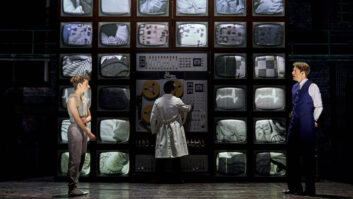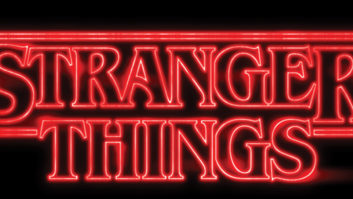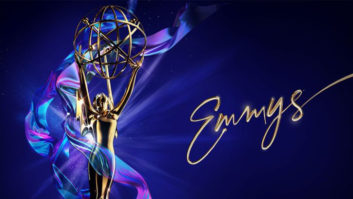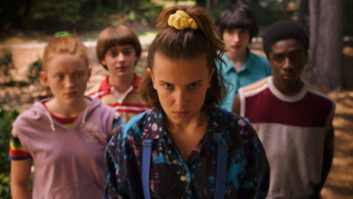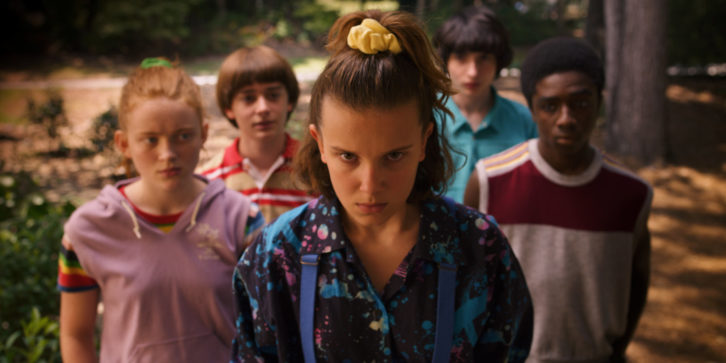
When the Primetime Emmy Awards are handed out in mid-September, the sound team for the Netflix series Stranger Things will be looking at the possibility of a rare three-peat. Seasons 1 and 2 both won Emmys for Outstanding Sound Editing and were both final nominees for Outstanding Sound Mixing. “Chapter Eight: The Battle of Starcourt,” the finale of Season 3, is again nominated in both categories.
While much of the crew remains intact from Season 1, including the anchor of the sound crew, supervising sound editor Craig Henighan, Season 3 saw the arrival of a new re-recording team, with Will Files on FX, and Mark Paterson on music and dialog.
“I had already been a fan of the show, and in working with Craig over the past few years I had a pretty good idea of what it was all about,” Files says. “Neither Mark or I had ever worked in episodic before, but it seemed that this season the Duffer brothers were interested in working with a mix team that had worked mostly in feature films. This was also the first time that Mark and I had mixed together. I guess Craig sort of served as matchmaker.”
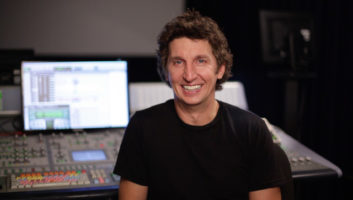
Henighan has served the show as sound editor, supervising sound editor, sound designer, re-recording mixer. For Season 3, anticipating that everything would need to be bigger, he concentrated on sound supervision and design.
“Season 3 is certainly bigger, and when I say bigger, in our world bigger is more about frequencies,” Henighan explains. “We didn’t back up a dump truck with 100 more monster effects. It was more about developing sounds and creating dynamics. By Episode 6, we realize the Mind Player is for real, so Will and I had to figure out how these new, huge monsters would jump out of the speakers. We did some interesting things with frequencies, and then on the dub stage I know Will would play with distortion to make them feel like they’re jumping out at you.
“But it’s not more tracks or being more complicated,” he continues. “It’s editing down to the core sounds and monster roars, not overcomplicating the frequency ranges. Hear what the music is doing, and get out of the way. Or by adding dynamics in the track, by getting quiet right before the roar and setting up the pacing for the whole track. It’s apparent loudness. We spent a lot of time making sure the dynamics are there.”
Chapter Eight is the Battle of Starcourt, and it’s the season finale. Of course it’s big. But it will likely be remembered as much for its music sequences. Much of the identity of the entire Stranger Things universe is tied to the nostalgic, ‘80s-style, synth-driven score by composers Kyle Dixon and Michael Stein (who won an Emmy in 2017 for Original Main Title Theme; not to mention Nora Felder’s thrice-nominated music supervision). Then midway through Chapter Eight, the strains of The Neverending Story enter in a complex, montage scene, unexpectedly.
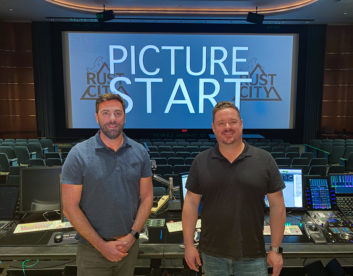
“It came almost from left field in the middle of the episode,” Paterson says. “You have production recordings form different sets, with different tempos and pitches, and you put them together to make one song out of them. Then split-screen; it’s quite complicated, but it came together great in the end. We have to mention Dave Kotz here, the music editor, who flirts that boundary between editor and composer. By the time we got to the show we had a good plan and a solid mix. Then we add the futzes, which to me adds to the humor.”
Nobody can predict what makes a show a hit. If they could, we’d have nothing but hits. But the Duffer brothers are universally praised by all on the team for fostering a sense of collaboration, from the moment they brought Henighan in to look at script and preliminary art for Season 1, Episode 1. It hasn’t changed since.
“For Season 3 we spotted the show every week at Netflix together,” Henighan says. “Almost all of the department, going through the episode, watching scene by scene. And adding comments. When you talk about collaboration, that family atmosphere the Duffer Brothers let us be a part of is a huge, huge thing.”
“The first day Will and I met the brothers, there were 20 people in the room, and they would hit Play,” Paterson recalls. “That’s quite impressive. They care about every aspect of the show, not just sound and picture. It’s a very positive approach.”
Dallas Audio Post Adds Dolby Atmos Stage
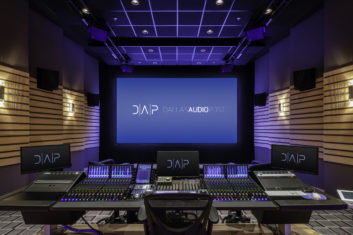
Dallas Audio Post has rebuilt its main mix room to enable production of soundtracks in the latest immersive formats. Now equipped with a total of 29 Meyer Sound cinema series loudspeakers, the world-class facility is among a very few that have been certified by Dolby for working with both the theatrical release and home entertainment versions of Atmos.
“Our main mix room is smaller than major Hollywood dub stages, but larger than most facilities dedicated to mixing for the home,” comments Roy Machado, owner and creative director at Dallas Audio Post. “Fortunately, we had a very talented team working with us, and we managed to thread the needle and make it work for both formats. That gives us extraordinary flexibility in meeting the demands around here, where you have to be a jack of all trades. We produce an exceptionally wide variety of content for the broadcast, streaming and theatrical release markets—everything from sporting events, feature films and reality TV to documentaries and corporate videos.”
For this stripped-to-walls renovation, Machado relied on the same companies responsible for the room’s 2013 upgrade to its first Meyer Sound system. Architect for both projects was Francis Manzella Design, Ltd. with system specification and final tuning on this round by Miles Rogers of Meyer Sound and Bryan Pennington of Dolby.The new loudspeaker layout retained the three Acheron 80 loudspeakers for LCR channels. Four more HMS-10 surround loudspeakers were added to the existing complement of eight, along with eight all-new HMS-5 surround loudspeakers for the height channels plus two Amie-Sub compact cinema subwoofers for bass management. Power for LFE was bolstered by doubling the number of X-800C cinema subwoofers, from two to four.
“Before Atmos, having full-range surrounds wasn’t that critical,” Machado says. “But now, with your bass-managed signal set to height and surround, you need to translate the same quality and textures from the front screen channels. And Meyer Sound has achieved that. You can take a sound from the left screen channel and pan it anywhere in the room and it sounds exactly the same, which is almost shocking.”
Machado is particularly enamored by the petite HMS-5 surround loudspeakers added for the height channels. “I was not only amazed by the SPL output, but with the way Meyer could tune them to match the character of the HMS-10 surrounds. They sound spot on, just like their larger cousins.”
The room’s Avid S6 console is now augmented with a new MTRX HD audio interface and SPQ speaker processing card. In addition to Dolby Theatrical and Home Theater Atmos, the facility offers 7.1 and 5.1 surround as well as stereo mixing.
Re-Recording Mixer Jonathan Wales
For more than three decades, Warner Bros. Re-Recording Mixer Jonathan Wales has created audio magic for numerous feature films, documentaries and television shows. As content creation and technical specifications change, Wales finds himself having to adapt to newer audio compliance standards across a variety of platforms. Most recently, he worked on the Warner Bros. movie Dr. Sleep and the Netflix series 13 Reasons Why.
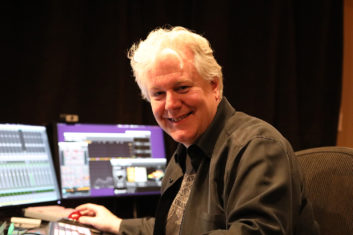
The one mixing plug-in that Wales finds himself using more than anything else is NUGEN Audio’s Halo Upmix. “That software is in all my templates,” he explains. “Halo Upmix is incredibly valuable because it is highly compatible when you take the resulting mix and fold it down to different formats. If I use Halo Upmix for Atmos, it is still valid when we then take the 7.1 output. You can’t use a plug-in that does something cool in one format, but then actually messes up your work in a different format, to the point that it doesn’t sound right anymore.”
When it comes to Netflix projects, Wales relies heavily on NUGEN’s VisLM loudness meter to ensure compliance. “VisLM tracks the timeline as we’re working, which allows you to get a really good idea of how making changes will affect where you are,” he explains. “Most directors don’t care about loudness specs and don’t want them to exist. They prefer to do whatever they feel is creative. They need us to figure that part out without getting in the way of what they’re trying to achieve.”
Although his projects range in size and scope, Wales typically utilizes a Pro Tools workflow. He mixes on an Avid S6 console and feeds it from Mac Pro workstations. “I can map the plug-in on the S6, and put parameters on faders, making it easier to dial things around in a dynamic way. The plug-ins obey all the rules and in terms of functionality are very stable; we have never had any significant problems..”
